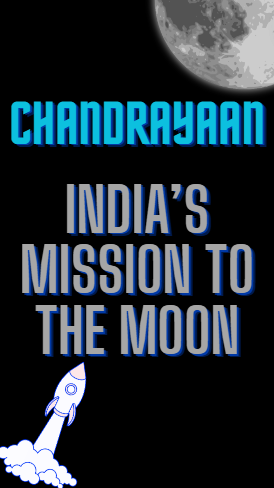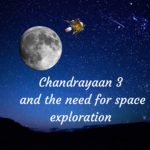India’s dream to moon was launched on 22nd Oct 2008 when Chandrayaan-1 soared to embark upon its mission of finding water on moon. Amongst the 11 payloads it carried, here are 2 important Indian payloads:
Moon Impact Probe:
This probe helped confirm the presence of water in the atmosphere of moon. It works by crashing into the moon’s surface and studying the particles which were thrown into the surroundings. It hit near a crater named Shackleton in the South pole and the point of impact was later named The Jawahar Point.
Terrain Mapping Camera: This probe helped map the topography of the moon and capture pictures in black and white.
Chandrayaan-1 orbited around the moon helping ISRO collect significant data until it lost contact on 28th August 2009.
Chandrayaan-2
Orbiting the moon wasn’t enough to collect hard-proof of the discovered information, so, India wanted to soft land and operate a robotic land rover on moon. Thus, Chandrayaan-2 was launched on 22nd July 2019. However, the lander named Vikram, crash landed on the moon’s surface due to a software glitch. The crash site was later named The Tiranga Point. But the Chandrayaan-2 mission is considered a partial success as its orbiter helped map the landing area for Chandrayaan-3. The orbiter is still active.
Chandrayaan-3
Launched on 14th July 2023, it’s a follow-on mission to Chandrayaan-2. Chandrayaan-3’s lander is also named Vikram and its rover was named Pragyan. It took 40 days, 3 hours and 29 minutes for Chandrayaan-3 to travel all the way to moon and finally landed on 23rd August 2023. This made India the first country to land on the South Pole of the moon. The landing point is called The Shiv Shakti Point.
It is investigating the water-ice present on moon which was discovered by Chandrayaan-1 and the payloads in the lander and rover had successfully completed a few experiments. The lander payloads ChaSTE helped measure thermal conductivity and temperature while ILSA helped in studying lunar quakes. The rover payloads APXS (spectrometer) and LIBS (spectroscope) were used to find the elemental composition of the site’s surroundings.
Chandrayaan-3 has conducted studies for 1 lunar day which is equivalent to 14 earth days as the Lunar south pole will be in shadow after that. The lunar south pole is an interesting place, as there are craters present which are very cold trench-like ditches that contain fossils which could help understand mysteries of the ancient Solar System.
Recently, the Vikram Lander had a hop experiment and succeeded its mission’s objectives. It rose to a height of 40cm and hopped. This made India the second country to hop on the moon. As the shadow has been casted over the moon, the Vikram Lander has fallen asleep next to Pragyan rover, to preserve its battery. ISRO expects them to rejuvenate on September 22, 2023.








